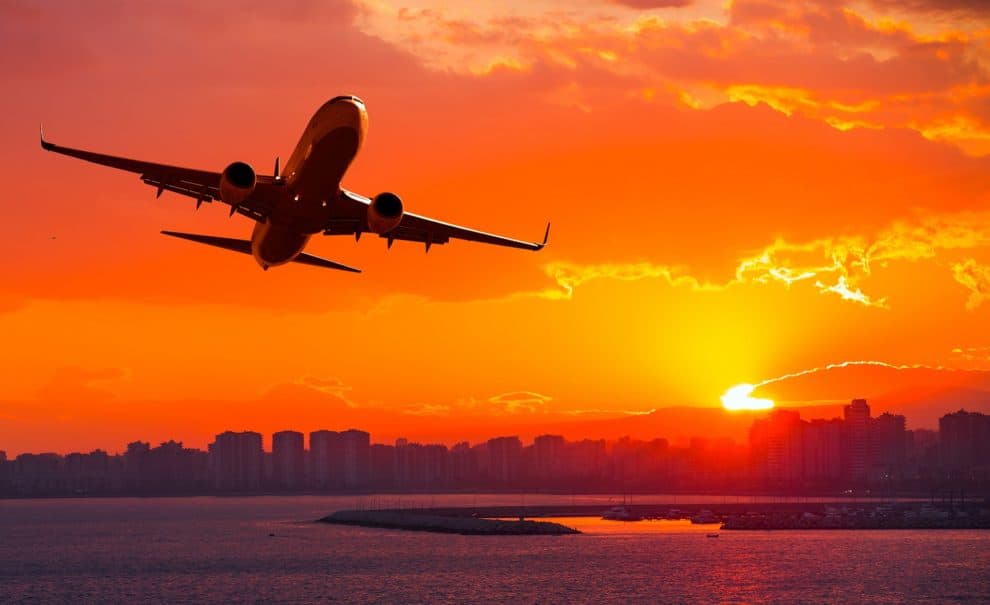
- It has never been safer to fly on a commercial airline flight.
- It has now been over a decade since the last fatal commercial plane crash in the US.
- The Boeing 737-MAX has flown millions of passengers all over the world.
The quote ‘Never let a good crisis go to waste’ has been alternately and incorrectly attributed to James Carvelle, Lee Atwater, Rahm Emmanuel and even Winston Churchill. In reality, the answer is ‘none of the above’–it has been traced back to 1976 when a doctor named M. F. Weiner wrote an article in the journal Medical Economics entitled “Don’t Waste a Crisis — Your Patient’s or Your Own.” His point was that a medical crisis can be used to improve other areas of a patient’s lifestyle and health. It’s since been co-opted often in reference to economic, social or political agendas that exploit a climate of fear to further their goals.
I’ve thought about this quote often in reference to ersatz ‘crisis’ surrounding Boeing and the 737-MAX airliner. Unfortunately, in this case the aforementioned quote would require the corollary ‘if you can’t find a good crisis feel free to make one up’. The hysterical media and grandstanding politicians are just too happy to comply.
THE FACTS
If you haven’t been paying attention here are the facts: last October, a 737-MAX 8 owned by Lion Air crashed into the Java Sea off of Indonesia resulting in the death of all 187 people aboard. Afterwards, it was theorized that the crash might have been due to incorrect cockpit data readings Boeing issued an operational manual guidance, advising airlines on how to address this situation. This is a common occurrence and can be prompted by anything from pilot recommendations to a crash. A commercial aircraft isn’t like a passenger car–they just don’t throw an owners manual into the glove box and hope for the best. Operational procedures are a constant ‘work in progress’ toward the goal of safer and more efficient air travel. This was the first fatal accident involving a 737-MAX and the first hull loss of the model.
A couple of days ago, another 737-MAX crashed–this time an Ethiopian Airlines flight crashed soon after takeoff from Addis Ababa en route to Nairobi, Kenya killing all 149 passengers and 8 crew members on board. The cause of the crash is still under investigation but for whatever reason it has evoked a hysterical reaction from the mainstream media, governments/ politicans and to some extent the general public. Despite no evidence that the crash was due to any type of mechanical failure, governments worldwide tripped all over themselves in ordering the 737-MAX grounded. To their credit, the US didn’t immediately jump on the bandwagon but unfortunately they’ve since acquiesced.
In no case can you minimize the grief of the people who lost friends, family and loved ones. This is true with any type of untimely/unexpected death whether they’re caused by heart disease, a bathtub accident or a hornet sting. All three of these causes of death are significantly more likely than dying in a commercial plane crash. My job as an oddsmaker is essentially to quantify probabilities. So let’s sift through some statistical data and put some numbers into play:
THE BOEING 737 MAX AIRLINER
As circumstance would have it, my son-in-law was scheduled to fly from Denver to Salt Lake City on a 737 MAX the day the plane was grounded in the US. The Denver Airport is perfectly safe and yet he was at greater risk spending an extra five hours there than he would have been taking the flight. There are several models of the 737 MAX with the most commonly used being the 737 MAX-8. The plane has an almost astounding safety record. In its first full year of operation (2018) the airplane made 41,000 flights for over 118,000 hours of airtime. It flew over 6.5 million passengers safely and without significant incident.
The most disturbing component of this trumped up crisis is that the media and political parasites that leverage the hysteria have chosen to blame the airworthiness of Boeing’s plane as the most ‘logical’ reason for the crashes when in reality it is one of the least likely. An airplane is only as good as the people who fly it and maintain it. The first 737 MAX crash has received less coverage in the US than the most recent one but its worth noting that Lion Air is frequently rated as the most dangerous airline in the world. The safety record of Lion Air is so bad that it is prohibited from flying to the United States. Or Canada. Or the European Union. Lion Air has likely suffered more hull loss incidents than any airline in the world though most seldom gain much media traction. AirlineRatings.com did an extremely comprehensive study on airline safety worldwide and ranked them on a 7 star stale. Lion Air received…zero stars. Not surprisingly, many aviation experts have suggested that ‘maintenance issues’ are the most likely cause of the Lion Air crash.
Ethiopian Air is a significantly better run airline than Lion Air and has a much better safety rating. Even so, there’s no reason to immediately assume that the aircraft is at fault in the most recent crash. One problem in less economically potent countries such as Ethiopia is that the pool of available pilots is much smaller than countries in Europe or North America. They hire the best pilots they can but on balance the ‘best pilots’ in a smaller labor pool such as Ethiopia are by definition not as experienced as in a market with more qualified pilots to choose from. There is some suggestion in both crashes that pilots did not follow correct remedial procedures. One procedure that apparently was not followed was shutting down the plane’s automatic trim system. Had this been done in either instance, there’s a good chance that the pilot would have had more control to avert the accident.
There has been some criticism of how Boeing has responded to the situation and how they addressed safety concerns related to the airline. This assertion is based simply on ignorance of how the aviation industry works. There have been breathless reports that ‘pilots have had many safety concerns over the aircraft’. This can be said for every aircraft that has ever flown commercially. That’s part of a pilot’s job and every major airline manufacturer pays close attention to their suggestions. Right now, Boeing is probably just letting the hysteria play out. It won’t take long given the short attention span of the public, politicians and the media. If there’s a mechanical or engineering issue found Boeing will likely do what they did when there were concerns of batteries catching fire on the 787 Dreamliner–find the problem, fix it, and explain publicly what they’ve done.
COMMERCIAL AVIATION IS ALMOST UNBELIEVABLY SAFE
Lost amid the hysteria is the most important component of the reality of modern aviation: it is safe to the point of almost being unbelievable. There has not been a fatal accident on a regularly scheduled US commercial airliner in over a decade. Also lost in the media feeding frenzy is the enormity of the world aviation industry. Each year, there are 35 million flights that carry 3.5 billion passengers. If flying were even marginally dangerous there would be plane crashes killing hundreds of people all over the world on a daily basis.
So what are the odds of dying in a crash of a commercial jetliner? There are a number of variables such as route, airline, aircraft, weather, crew experiences etc. but it ranges from 1 in 20 million under the best of circumstances to 1 in 5 million under the worst. If you need a one size fits all general odds of dying in a plane crash a frequently quoted figure is:
1 in 11 million
That’s significantly less than being killed by a meteorite (1 in 700,000), dying from a bee sting (1 in 79,842), dying from a flesh eating bacteria (1 in 1 million), drowning to death in your bathtub (1 in 840,000) or getting killed by a bear attack in a National Park (1 in 2.1 million). Here’s a helpful list of other potential causes of death that are significantly more likely than a crash of a commercial jetliner:
Odds of being killed
| by the flu | 1 in 70 | ||
| in a car accident | 1 in 111 | ||
| by accidental gunshot | 1 in 8,359 | ||
| by sun/heat exposure | 1 in 13,729 | ||
| by a tornado | 1 in 60,000 | ||
| by a bee sting | 1 in 79,842 | ||
| by an earthquake | 1 in 110,000 | ||
| by drowning in your bathtub | 1 in 840,000 | ||
| by a flesh eating bacteria | 1 in 1 million | ||
| by an asteroid | 1 in 1.9 million | ||
| by a shark attack | 1 in 3.7 million | ||
| by a foreign born terrorist in the US illegally | 1 in 46.1 million |
Here’s another way to look at it: Let’s say you fly from New York City to London on a Virgin Atlantic Airbus 330. We won’t even use the ‘best case scenario’ odds of a crash even though it’s a very safe plane on a very safe route run by a very safe airline. Let’s say for the sake of argument that your odds of dying in a fatal crash on this specific route are 1 in 5.3 million (and keeping in mind that it really might be twice that or more). Now let’s say you take that flight daily every day of the year. You’ll be extremely jet lagged to be sure. How many years could you fly before you could expect ‘your number to be up’ and the plane to crash resulting in your death? Try 14,176 years!
THE PROBLEM OF RISK PERCEPTION
The deadliest aviation accident in history took place in Tenerife, which is the largest of Spain’s Canary Islands. In 1977, 583 people were killed after two airplanes collided on the runway. In the United States, that’s roughly the same number of people that die every eight hours from heart disease.
A great book called How Risky Is It Really?: Why Our Fears Don’t Always Match the Facts by David Ropeik detailed why humans have a harder time dealing with statistically ‘irrational’ fears than more realistic things like heart disease or the flu. His theory–to be considered a ‘catastrophe’ it has to meet three criteria: It has to be big, it has to happen all at once and it has to be calamitous aka ‘really bad’. A plane crash qualifies as it meets all three criteria. Heart disease meets only one of the criteria. This is hardwired in human nature but unfortunately it gets exploited by bottom feeders in politics and the media.









